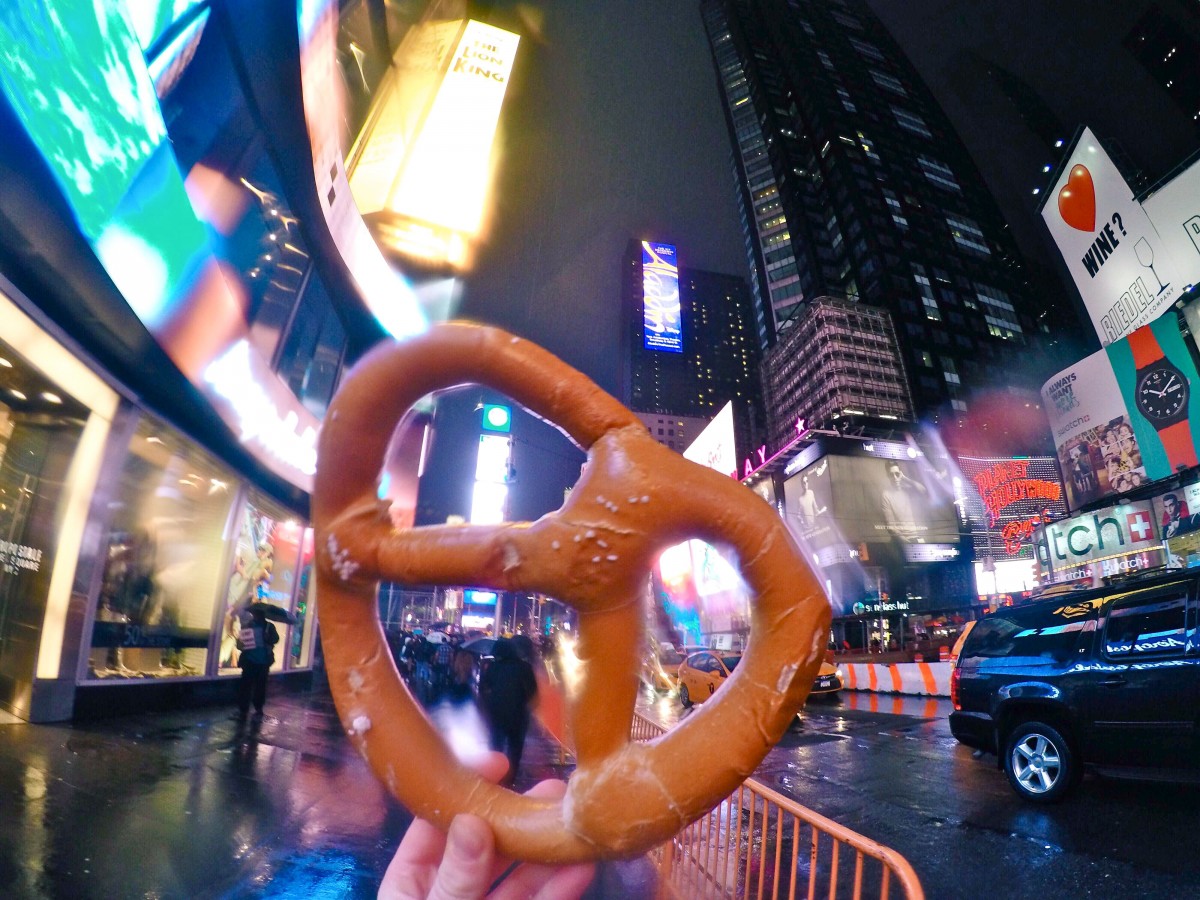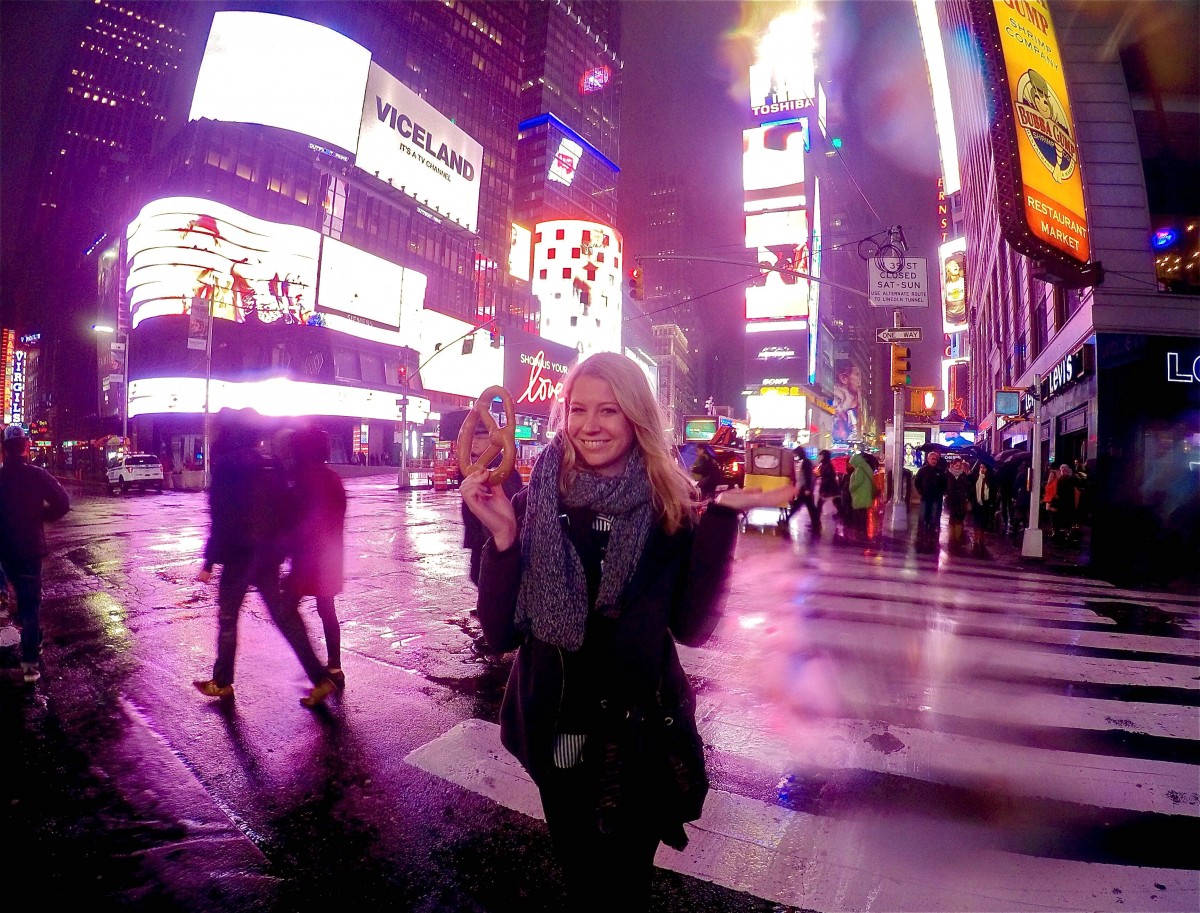5 things an Australian expects from NYC
Number 1: Bagels. Bagels everywhere. Savory bagels. Sweet bagels. Bagels and cream cheese. Bagels. Just. Everywhere.
Number 2: An unusually large amount of emotionless, career-driven individuals who walk at a rapid pace (usually found aggressively mumbling to themselves on subway cars).
Number 3: Filtered “cawfee”—an incredibly awful drink that only vaguely resembles an Australian coffee.
Number 4: Bike riding around Central Park is essential; seeing squirrels is just the icing on the cake.
Number 5: Of course, hot dogs, pizza and pretzels. These are also everywhere. And always in far larger sizes than necessary.
 These are some very common opinions I collected from my friends in advance of coming to New York. I am Adrienne, a Griffith University marketing major here from Australia’s sunny Gold Coast. Having never touched American soil before, I am happy to be in New York City interning with Tronvig Group. The diversity of American culture has always fascinated me and now I am here getting to know some locals.
These are some very common opinions I collected from my friends in advance of coming to New York. I am Adrienne, a Griffith University marketing major here from Australia’s sunny Gold Coast. Having never touched American soil before, I am happy to be in New York City interning with Tronvig Group. The diversity of American culture has always fascinated me and now I am here getting to know some locals.
Despite hours spent speculating about what it would be like working in New York, the truth is, I did not really know what to expect. I did though make some solid assumptions.
So where did my assumptions come from? Some from research of the ‘local’ or ‘must-see’ things around the city and tones of conversations with friends and family who had visited before. Unfortunately though, most of my preconceived ideas were things I had gathered from repeatedly watching episodes of Friends and other ever-present artifacts of American pop culture.
Your Australia
What comes to your mind when someone mentions Australia? Someone throwing a “shrimp on the barbie” perhaps? Outback Jacks? A Foster’s beer?
Cultural generalization leverages our need for a simple code that helps us feel we know something about which we do not. We create a kind of ‘familiar territory’ based on a range of preconceived notions of what we believe a country or a culture is. It’s easy and safe to latch onto a brand as filtered through the media and advertising, letting these vehicles shape our perception. Given this familiar territory, we naturally create our own ‘hot-list’ of several reference points for any given county. We draw from that when thinking about that place or interacting with individuals from that place.
It’s easy and safe to latch onto a brand as filtered through the media and advertising, letting these vehicles shape our perception.
The truth is, we don’t really get to decide what this is going to be. These cultural ‘hot-lists’ are handed to us. They are the product of media and advertising imagery endlessly reinforced. How might you picture an Italian chef? Is he slightly overweight, angry and expressively using his hands?
Branding made me do it.
Branding is powerful. Branding impacts consumer’s perceptions even of things as large and complex as countries and cultures. A few years ago, I was living and working in the United Kingdom and my British friends were regularly quoting Foster’s beer advertisements to me in their very best Australian accents. I found myself in the awkward and embarrassing situation of having to ask what Foster’s was. It was a brand I had never heard of, not quite “Foster’s, Australian for Beer.”
I immediately found myself questioning all the brands that I instantly and subconsciously associate with a destination or a group of people.
My friends were shocked. What the Foster’s beer company has done is successfully create the ‘quintessential Australian beer brand’ by exaggerating a stereotyped Australian lifestyle. This was amusing and an eye-opener for me. I immediately found myself questioning all the brands that I instantly and subconsciously associate with a destination or a group of people.
America is everywhere.
Coming to America has not yielded many surprises. I think this is because growing up in Australia means I was surrounded by American pop culture—films, fashion, music, TV shows, language and even general knowledge. (A typical Australian can name more American states than Australian ones and there are only 6.) American pop culture has influenced and shaped my life without me even being aware of it, and I was certainly not able to control it. Images of the American lifestyle have bombarded me from every media platform. American entertainment is everywhere.
I am not trying to glorify advertising’s contribution to the loss of distinct cultures and the Americanization of world culture. I appreciate the profound impact that branding and advertising have had on my own stereotypes, my own mental model for America.

My travel epiphany
These stereotypes are often fun to play around with but perhaps even more fun to correct.
In life I am quite strongly against the idea of placing someone in a category and assuming there is no difference between the way they act, look or behave from others in that category. This is stereotyping and it’s a bad thing. I therefore make a habit of consciously attempting to catch myself when I do this and I try hard to avoid going down a path of preconceived assumptions. What traveling has again made me realize is that no matter how much I try to avoid doing this, it is nearly impossible to entirely circumvent. The bottom line for me is that we all share the same common myths about other cultures and these stereotypes are often fun to play around with but perhaps even more fun to correct.
Photos by the author (Note: no pretzels were consumed during the making of these photos.)


Ask for help.
We are kind, thorough and ready when you are. You just need to ask.